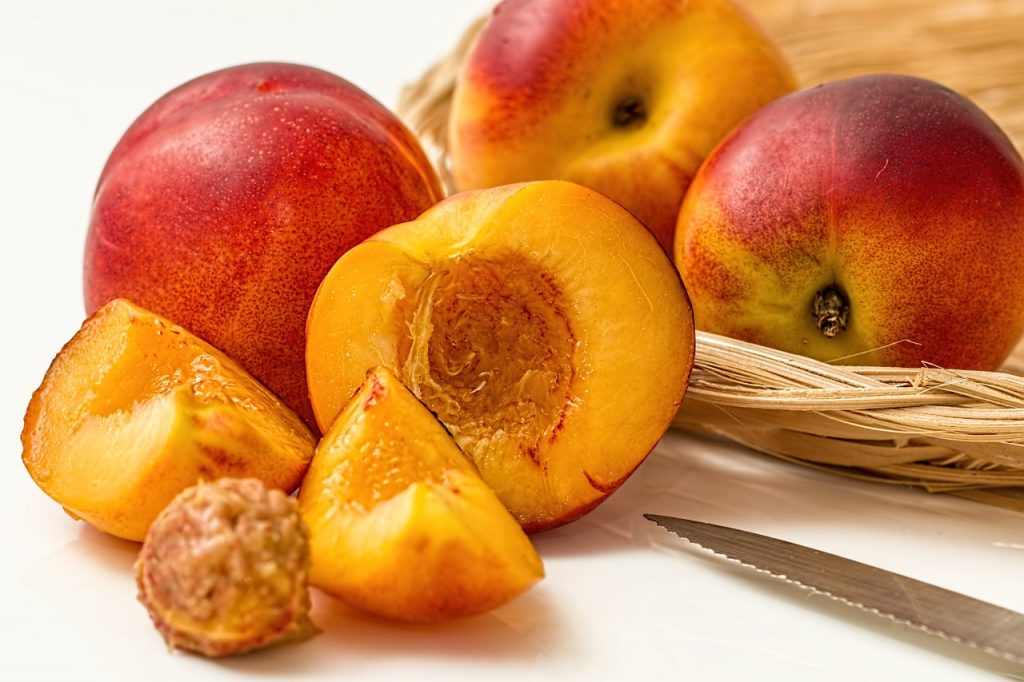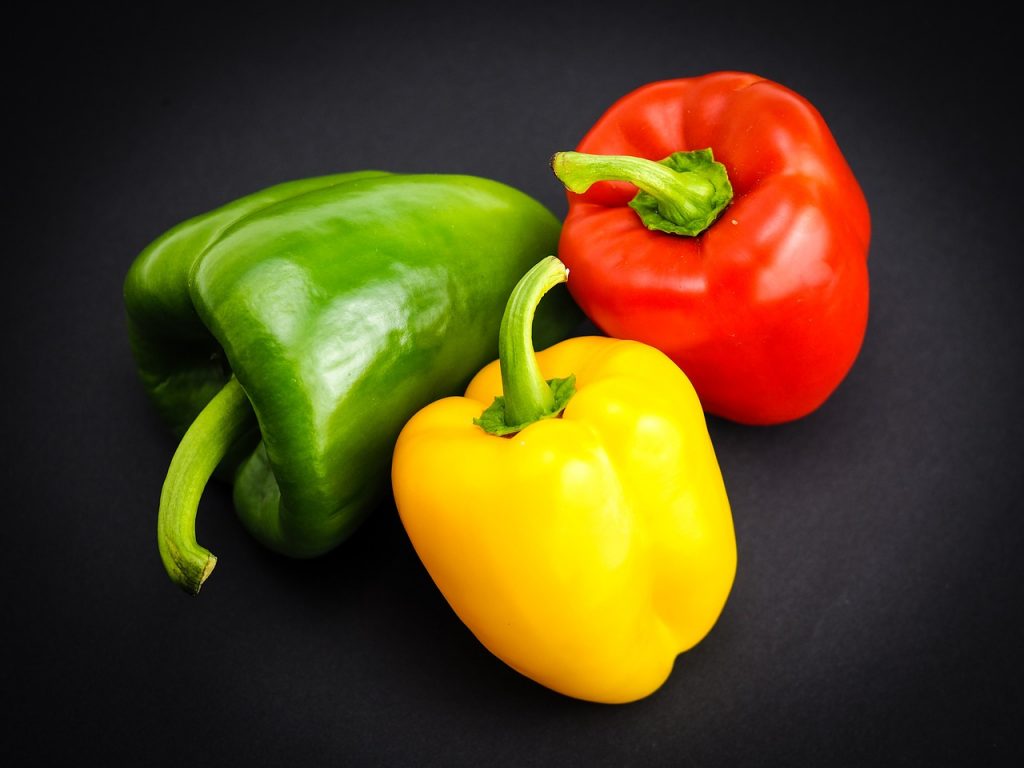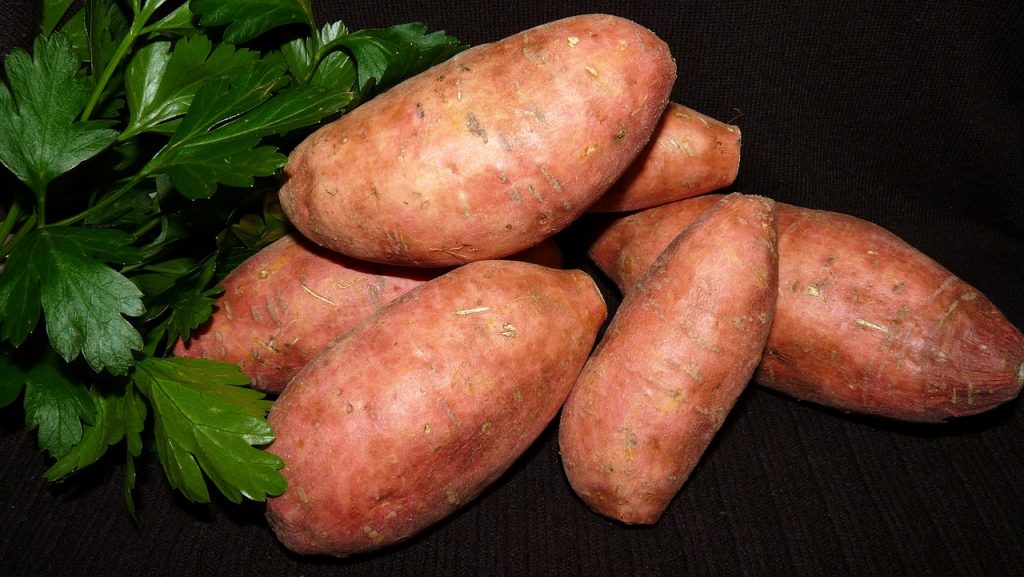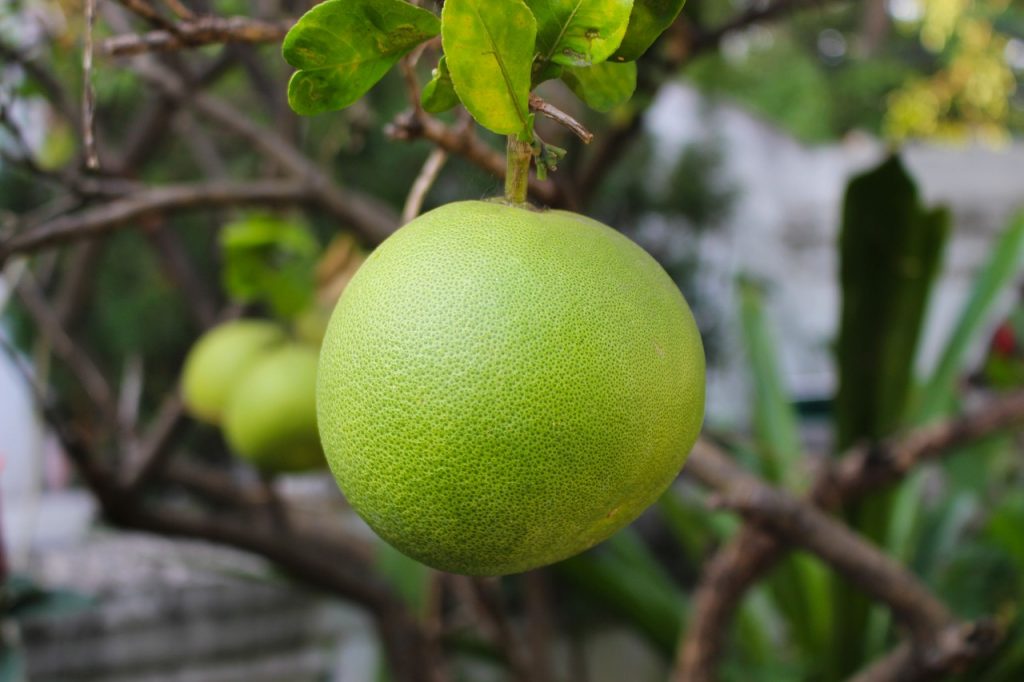[Article updated on 19/09/2023]
True superheroes of well-being and health, vegetables and fruits are of capital importance in the human diet. Healthy, delicious and nutritious, vegetables and fruits do not have a high energy value, but they provide essential nutrients necessary for the normal implementation of metabolism. Vitamins, minerals, easily digestible carbohydrates, dietary fiber are just a few. Discover fruits and vegetables in P!
Fishing
Peach is the fruit of the peach tree (Prunus persica), a tree belonging to the Rosaceae family. The fruit has yellow or whitish flesh, a delicate aroma and velvety skin. The flesh is very delicate in some cultivars, but is quite firm in some commercial varieties. Peaches with yellow flesh have a pleasant taste, fragrant and more or less sweet or sour, while those with white flesh are particularly fragrant, juicy, sweet and have an aromatic taste. The fruit is eaten fresh. It can also be used to make jams, syrups and liqueurs. Peach is a very low-calorie fruit. There are only 39 calories in 100 grams of peach. Peaches are a source of many vitamins and minerals. 100 g of peach contains:
- 200 mg of potassium;
- 10 mg of calcium;
- 8 mg of magnesium;
- 0.6 mg of iron;
- 0.13 mg of manganese;
- 0.16 mg zinc;
- 0.05 mg of copper;
- 595 µg of beta-carotene;
- 0.96 g vitamin E;
- 3 mg vitamin C;
- small amounts of B vitamins

Pumpkin
Pumpkin is a fruiting vegetable. It is the fruit of Cucurbita maxima, a creeping plant belonging to the Cucurbitaceae family. Creamy, colorful and with a sweet and sour taste, pumpkin is one of the most versatile vegetables in the kitchen. From traditional pumpkin risotto to baked pumpkin, there are many ideas to bring out the best of this fall ingredient. Pumpkin is a simple but appetizing side dish that goes perfectly with main meat or fish dishes. Pumpkin is also the protagonist of delicious desserts such as pumpkin and chocolate cake. It is a perfect vegetable for low-calorie diets. In fact, 100 grams of fresh pumpkin contains only 20 calories. It is rich in beta-carotene, sodium, calcium, glutamine and arginine, but also in amino acids, fiber and cucurbitin.
Potato
The potato is a tuber vegetable. It is harvested from Solanum tuberosum, a plant belonging to the same botanical family as chilli, tomato and pepper. The potatoes are sweet and slightly bitter. Good quality tubers are characterized by a flavor combination reminiscent of butter, cream, nuts and earthy flavors. When cooked in the oven, the skin of old potatoes can take on flavors reminiscent of cocoa and malt. There are several ways to prepare potatoes.
Potatoes can be cooked with or without peel, whole or in pieces, with or without seasonings. Cooking is still necessary to break down starches. The most common recipes are mashed potatoes and fries. They can also be used to make gnocchi, rösti or focaccia. These tubers are very rich in vitamins (C, A, B3, B1, B2, B6) and minerals (potassium, phosphorus, calcium, magnesium, zinc, copper, iron). The potato has many phyto-compounds with well-known antioxidant properties, such as lutein, zeoxanthin, beta-carotene and chlorogenic acid. 100 grams of potatoes provide an average of 86 calories.
Bell pepper
Pepper is a fruiting vegetable. It is picked from the pepper plant (Capsicum annuum). Pepper cultivars produce fruit in different colors, including red, yellow, orange, green, white and purple. Sautéed peppers are a perfect side dish to make during the summer. They can be served as an accompaniment to meat dishes, cheeses, croutons or to garnish a sandwich. Very tasty with their sweet and sour note, they enhance the flavor of many dishes.

The antioxidant properties of peppers are remarkable. They owe this to their high content of vitamin A, C and beta-carotene. Their diuretic and purifying properties also make them valuable vegetables. Peppers are also very rich in mineral salts, particularly potassium. As such, it is a perfect ally for the health of the cardiovascular system. Thanks to their high fiber content, peppers have laxative properties and increase the feeling of satiety: this makes them an essential food for anyone who wants to stay in shape.
Leek
Leek (Allium ampeloprasum L.) is a leafy vegetable produced by a biennial plant belonging to the liliaceae family. It is a vegetable with a taste very similar to onion but more delicate and digestible.
Leek is used in cooking as a vegetable and as an aromatic herb, but it is also a medicinal plant. It is used to prepare soups, broths, risottos, pastas, omelettes or pies. Cut into thin slices, it can also be eaten raw as an aperitif or used to garnish and flavor salads. Very rich in water and low in calories, leek is a valuable ally in slimming diets and a source of precious microelements useful for health.
It is an excellent mineralizer, particularly rich in calcium, phosphorus and iron. It has a good vitamin C content and helps strengthen the immune system. The white part contains delicate fibers that make leeks an easily digestible vegetable.
Pea
The pea is a seed vegetable produced by Pisum Sativum, a plant belonging to the Fabaceae family. Thanks to their mild and delicate flavor, they can be used extremely versatile in a variety of recipes, from savory muffins to ham and peas. It’s a great classic of family cooking, like the Fusilli cream with ham and peas.
Peas have several beneficial properties that arise from the nutrients and active ingredients they contain. They are particularly light and digestible legumes compared to other variants. They generally do not cause problems with aerophagia or meteorism.
Peas are rich in mineral salts, vitamins and water. they contain fibers useful for intestinal well-being and to combat cases of constipation. They have antioxidant power and help to satiate. Peas also help keep cholesterol and blood sugar at bay and also seem to be allies of the heart, circulation and immune system, thanks to the presence of chlorophyll which stimulates the production of red blood cells.
Yam
Sweet potato is a root vegetable with a sweet and starchy flavor. It is the tuberous root ofIpomea batatas, a creeping plant belonging to the botanical family Convolvulaceae. The skin color can vary from red-orange to brown to white while the inside can be yellow, orange and even purple. Its particularly sweet flavor is reminiscent of a mixture of potato, pumpkin, chestnuts and also carrots. You can easily use them to replace regular potatoes or pumpkin in more traditional recipes.

You can cook sweet potato in several ways: baked, boiled, steamed, microwaved, and even fried like regular potatoes. They go easily with all foods: eggs, cheeses, vegetables and meats but also with spices and aromas. Sweet potato is an ally of cardiovascular health. Its contribution of antioxidants, vitamins, minerals and fiber helps protect the heart and arteries. In addition, it is a food free of saturated fats and cholesterol. Sweet potato provides around 80 kcal per 100g.
Parsnip
Parsnips are a root vegetable. It is the tuberous root of Pastinaca sativa, a plant belonging to the Apiaceae family. It looks a lot like a carrot, but is larger and ranges in color from white to ivory to hazel. Its taste, however, is closer to that of potatoes, although more acidic and more intense.
Parsnip cannot be eaten raw, as the roots are too hard and woody, but it can be used in cooking in a variety of ways. The first thing to do is to remove the skin, which is too tough. Cooking should then be slow and prolonged. You can boil it then blend it to make a delicious soup or velouté to be seasoned with extra virgin olive oil and parsley. Parsnips are also excellent baked.
Parsnips have a high protein content. It also contains more sugars and has a higher caloric value, compared to carrots. Like carrots, it contains vitamins C and B, as well as antioxidants and valuable mineral salts such as phosphorus, calcium, iron and potassium.
Plum
The plum is the fruit of Prunus domestica, a shrub belonging to the Rosaceae family. The fruits are generally between 2 and 7 centimeters in size and have a globular to oval shape. The flesh is firm and juicy. The skin of the fruit is smooth, with a natural waxy surface that adheres to the flesh. The plum is a drupe, meaning its fleshy fruit surrounds a single hard seed.
Ripe plums can have a waxy, white, dusty coating that gives them a murky appearance. Their sweet flavor, with a slightly sour aftertaste, makes them perfect for a healthy and tasty snack. The fruits are eaten fresh, cooked, dried or in the form of jams and marmalades. Made up of 88% water, plums are rich in carbohydrates, fiber, calcium, phosphorus, iron, as well as vitamins C and K.
Fresh plums contain approximately 46 kcals per 100 g. The average amount of carbohydrates in such a serving of fruit is 12-14.6 g. Although plums are not rich in vitamin C, they have very high levels of vitamin A and vitamin E. They also contain such important minerals as potassium, iron, magnesium, calcium and phosphorus.
Pomelo
The pomelo is the fruit of Citrus Maxima, a citrus fruit, close relative of the orange tree and the grapefruit. The thick skin of the fruit is green or yellow, and the slices are separated by bitter-tasting partitions. There are three types of fruit: red, white and pink, depending on the color of the pulp. The pomelo is the largest citrus fruit. The largest variety of white pomelo can weigh up to 10 kg. With a fairly low calorie content (around 35 kilocalories per 100 grams), pomelo contains a lot of vitamins and valuable trace elements: potassium, phosphorus, calcium, sodium and iron, B vitamins and vitamin C.

Pomelo is generally eaten fresh, but it is also used in making juices and salads. It can also be enjoyed candied. Pomelo goes well with other citrus fruits, as well as sweet fruits and berries: apples, pears, strawberries, bananas, peaches and kiwis. These salads are usually seasoned with whipped cream, sour cream, sweet sauces or honey. Pomelo pulp can be added to cocktails, ice cream or used to decorate pastries and cakes.
Apple
Apples are the fruits of the apple tree (Malus domestica). There are around 7000 varieties of apples. They differ in color, texture, flavor and nutritional content. Apples can be eaten in different ways: in juice, in salads or baked in pies. Apples are sometimes used as an ingredient in savory foods, such as sausages and stuffing. Apples can also be canned, dried or frozen. Apples are low-calorie fruits, they contain around 83% water. 100 g of these fruits only represent 30 to 50 calories.
Apple contains many different types of active ingredients. It contains mineral salts (sodium, potassium, magnesium, calcium, phosphorus, iron and iodine), vitamins, tannins, pectins, sugar, proteins and organic acids. In natural medicine, boiled and grated apples are used against diarrhea in children and against indigestion and peptic ulcer disease in adults. Apple peel tea is an excellent rinse for inflammation of the mouth and throat.
Pear
The pear is the fruit of the pear tree (Pyrus sp.), a genus of trees belonging to the Rosaceae family. Traditionally, pears are shaped like a light bulb, but there are round or cylindrical pears. The fruits have a variety of colors, from white to dark yellow, brown, orange-red and all shades of green. Some pears are juicy while others are firm and crunchy.
Pears contain almost all nutrients and substances useful to the body. It is :
- vitamins (A, C, E, H, K, PP, group B);
- macronutrients (calcium, magnesium, sodium, potassium, phosphorus, chlorine, sulfur),
- trace elements (iron, zinc, iodine, etc.),
- organic acids,
- essential oils,
- flavonoids,
- phytonutrients
- and other biologically active substances.
Ripe fruits are eaten fresh. It is also used as an ingredient in many aperitifs, salads, drinks, pie fillings and game dishes. It can also be dried, smoked, baked or used to make compotes, preserves, marmalades and jams.
Physalis
Physalis is the fruit of Physalis peruviana, a shrubby plant belonging to the botanical family Solanaceae. The round, yellow fruit has a diameter of between 1.25 and 2 cm. Its aroma can be described as that of a sweet tomato with an aftertaste of pineapple and vanilla. It can be consumed alone or in the form of preserves and syrup. It is used in confectionery preparations with other sweet fruits.

Physalis is a good source of provitamin A, vitamin K, vitamin B1 and various minerals including iron, magnesium, phosphorus, copper, manganese and especially potassium. Fresh fruit is also an excellent source of vitamin C. Pound for weight, it contains twice as much as lemon. This fruit is made up of 42% carbohydrates. The fats (8.5%) it contains are mainly unsaturated. It also contains a good amount of fiber (24%) and pectin which can act as regulators of intestinal transit.
Pitaya
Pitaya or dragon fruit is produced by many species of cacti belonging to the genus Hylocereus, but also Stenocereus. This unusual fruit is distinguished mainly by its original shape and color. Its shape resembles a cross between a pinecone and a leathery garnet, and the color of the most popular varieties is bubblegum pink. The white flesh of the pitaya contains many small black seeds which are also edible. The taste of pitaya can be described as delicate, sweet and slightly sour. Some say it tastes somewhere between kiwi and pear.
Pitaya is best when ripe. It is suitable as a snack as well as as an addition to desserts, cocktails or salads. The fruits can also be used to produce homemade wines and juices. The pitaya goes perfectly with the taste of pomegranate, strawberries and mangoes. The pitaya is a treasure from a nutritional point of view. It contains antioxidants, ascorbic acid, phenols, B vitamins and minerals such as calcium, phosphorus, iron.
Pine nut
Pine nuts are the edible seeds of several species of pine trees. In Europe, the most common species is Pinus pinea L. It is small and slightly oblong. Pine nuts have a sweet and sour but delicate flavor and a clearly noticeable pine aroma.
In cooking, pine nuts are very versatile. They are used in sauces, vinaigrettes and sweet and sour dishes. You can use pine nuts to make pesto by chopping them with basil, garlic, extra virgin olive oil and parmesan. You can also use pine nuts to make candies, cakes, cookies and ice cream. Pine nuts are very high in calories: 100 grams of these small, discreet peanuts contain more than 670 kcal.
Pine nuts also have a good protein content (30% by weight). The pine nut is also an excellent source of dietary fiber (4.5% of weight). Pine nuts are rich in iron, phosphorus, manganese, potassium, zinc and copper. Regarding vitamins, we note the presence of tocopherol (vitamin E), thiamine (vitamin B1), riboflavin (vitamin B2) and niacin (vitamin PP).
Pistachio
Pistachio is the fruit of the pistachio tree (Pistacia vera L.), a tree belonging to the botanical family Anacardiaceae. This fruit is an oval drupe, slightly curved at the ends, similar to an olive. Its outer shell is inedible. Inside is a core containing an edible seed, which can be up to 2.5 cm long and up to 1.5 cm in diameter. Pistachios are very tasty, sweet, pleasantly fragrant and slightly oily. They differ from all other nuts in their beautiful light green color.

Pistachios are very energetic and high in calories (600 calories per 100 grams). You should therefore consume them in moderation, especially if you have problems with high blood pressure, diabetes or obesity. Compared to other nuts, pistachios contain greater amounts of antioxidant substances: lutein, beta-carotene and tocopherols. They are rich in phosphorus, calcium, potassium and iron, as well as vitamins E, B1 and B6. Pistachios are eaten roasted, but they are also used for vinaigrettes and sauces. They are also used in the preparation of ice cream.
Watermelon
Watermelon is the fruit of Citrullus lanatus, a lianescent plant belonging to the Cucurbitaceae family. The fruits are large and smooth. The color of the flesh ranges from red to yellow, greenish and white. Inside, we find black or red seeds. When ripe, the fruit generally weighs between 2 and 5 kg. Watermelons are characterized by a sweet, mild and delicate flavor. With only 16 calories per 100 grams, watermelon has a low energy content and can therefore also be consumed by those following special diets.
Watermelon is usually eaten fresh in the form of slices or diced. It is used in the making of fruit salads. It can also be transformed into juice. Watermelon juice can be mixed with other fruit juices or made into wine. Watermelons are rich in vitamins A, E and B. The pulp contains potassium, copper, iron, manganese, magnesium, zinc and a small amount of sodium. Watermelons are characterized by a high content of carotenoids, lycopene, lutein, zeaxanthin and cryptoxanthin.
Grapefruit
Grapefruit is the fruit of Citrus paradisi, a citrus fruit belonging to the rutaceae family. Grapefruit is eaten raw and used as an ingredient in fruit salads. Outwardly, grapefruits resemble oranges, but their pulp is sour and has a bitter taste. Grapefruit goes well with seafood, fish, poultry and young cheeses. Jam is made from it and juices are pressed. Grapefruit essential oils are used in the manufacture of confectionery and alcoholic beverages.
Grapefruit is a very vitamin-rich fruit. It contains vitamins (A, PP, C, D and B), as well as minerals (potassium, magnesium, calcium, phosphorus). The pulp contains fiber and the skin contains essential oils. The benefits of this fruit are invaluable. It increases brain activity, has a beneficial effect on memory and concentration. It helps fight depression and apathy. Grapefruit relieves nervousness and improves sleep.
Papaya
Papaya is the fruit of the papaya tree (Carica papaya L.), a tree belonging to the Caricaceae family. The fruit is a large berry usually spherical or cylindrical in shape and approximately 15 to 45 cm long and 10 to 30 cm in diameter. The papaya skin is greenish yellow and the flesh is orange or salmon. The core of the fruit contains black, round seeds that are also edible, but not necessarily tasty. Their taste is slightly peppery with a notable bitterness. The weight of the largest fruits can even reach 10 kg.

The flesh of ripe papaya is juicy and sweet, with a melon-like flavor. Papaya is eaten raw, alone or sprinkled with lemon. It can also be seasoned with salt and pepper. Cut into cubes, it makes a great addition to fruit salads. Papaya is low in calories and cholesterol and is a rich source of vitamins and minerals.
The fruit contains proteins, lipids, carbohydrates, fiber, flavonoids, vitamins (A, B1, B2, B3, B6, B9, C, E and K) and minerals (zinc, phosphorus, magnesium, potassium , sodium, calcium and iron). Papaya is credited with many health benefits. It facilitates digestion and regulates the digestive system. It strengthens the heart and the circulatory system.
